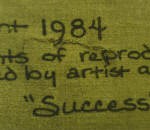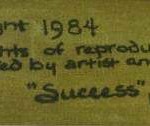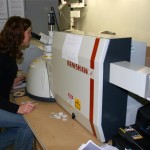07.09.09 UCLA- Everything in this world deteriorates. However we try our best to preserve some of the great masterpieces for the children of tomorrow. Surprisingly, art is one of the harder things to keep preserved according to guest speaker Giacomo Chiari, chief scientist of the Getty Museum.
It seems that its an everyday problem figuring out ways to keep art in a preserved state for future generations. Giacomo Chiari reports that about 98% of the pieces re
quire care they have done to previous pieces but then there is the 2% with new problems to be explored. But the real question in all of this is when does the liability of handling the pieces interfere with actually preserving the pieces?
Giacomo Chiari today talked with easy and insured us that these machines such as XRF’s, Raymans, and Ct-Scans all stay at least 2mm always from the art. However theres the possibility that one of the machines listed above and possibly other techniques have the potential to burn through the art. My response, parallel to Giacomo Chiari’s belief, is that this job should not be left to those who are inexperienced. Giacomo Chari makes the processes with the listed machines sound as if it were a daily walk in the park. And one would guess that it has a high success rate for most of the applications. However there is one Picasso piece and too quickly did the lecture moved on to how sometimes a sample must be taken. So between taking a sample and with the potential to possibly burn a hole though the piece by trying one of the listed machines first, what may be the best idea to go by?
My guess would be to keep the pieces fixated in Nitrogen with ultraviolet protection glass. This should be a more cost effective solution to potentially destroying, and damaging very expensive art. Like stated earlier there is only one piece. And since the true intention of the art owners is originality I’m sure they won’t like samples being taken or paint’s being matched to fix burnt holes. The liability is just too high.
However, it seems the technology and processes in this field of preserving art has come a long way since the 1990’s and now quickly analyzing the art seems to becoming much more common.
- Giacomo Chiari
- Before…
- After…
- The original way of doing it before the XRF
- XRF-The new way of analyzing art elements
- Art like this here is Priceless and unable to insure.
http://www.getty.edu/conservation/publications/newsletters/19_2/gcinews14.html
http://www.epa.gov/superfund/lead/products/xrffaqs.pdf
http://www.restorationbyheart.com/beforeafter.html





